After a decade of planning, the Kansas Turnpike Authority executed a seamless, overnight switch to a modern, cashless tolling system — enhancing safety, efficiency and customer convenience
DESIGNER
2025
The Kansas Turnpike spans 236 miles, carrying portions of the state’s most heavily traveled interstates through scenic prairie vistas, rolling hills and verdant pasturelands.
In 2014, the Kansas Turnpike Authority (KTA) began studying how it could modernize its system by shifting from manual toll collection to all-electronic tolling (AET). At the time, KTA had already introduced cashless lanes and electronic payments via KTAG — its toll transponder — at all entry and exit locations. However, traditional toll booths remained in operation across much of the roadway.
Based on this study, KTA developed a strategic plan to ensure a seamless transition to cashless tolling by 2024. The agency selected HNTB as the project’s designer.
“KTA has always been a customer-focused organization,” said Gretchen Ivy, HNTB’s central states office leader. "Leadership wanted advanced technologies to further enhance customer convenience, address its aging equipment and retiring workforce, improve safety and capitalize on the industry's movement toward cashless tolling."
That customer-first mindset aligned with a growing demand for modernization, driven in part by travelers familiar with evolving tolling systems across the country.
“Out-of-state travelers — an estimated half of turnpike customers — and Kansans traveling in other parts of the country were bringing back their expectations and experiences,” said Bruce Meisch, KTA director of technology and the cashless conversion program manager. “As toll roads across the country began moving to cashless tolling, customers increasingly asked when Kansas would do the same.”
Building the foundation for AET
Drawing on its tolling expertise nationwide, HNTB played a key role in supporting KTA’s decade-long planning and implementation process. Early in the effort, HNTB helped the agency identify that increasing its electronic toll collection usage from 50% to 70% would significantly smooth the transition to a fully cashless system.
KTA implemented concerted marketing efforts beginning in 2015 to boost KTAG or compatible transponder use. Outreach showed that switching from prepaid to postpaid accounts removed a barrier to transponder adoption.
Making that switch, KTA became one of only a few toll agencies in the country to offer postpaid-only accounts. The change increased customers’ acceptance and use of KTAGs, and KTA’s revenue collection has remained as strong as it was with prepaid accounts.
In 2017, KTA took the intermediate step of creating separate, highway-speed toll lanes for KTAG customers at its three largest mainline plazas, while still providing a cash payment option for non-transponder customers. This provisional move toward cashless tolling allowed KTA to begin collecting real-time data that laid the foundation for the future expansion of AET across the turnpike.
DriveKS: One Account, All Access
KTA’s new DriveKS system simplifies toll payments by combining transponder and license plate billing into a single, postpaid account. Built in-house, the platform offers a modern interface, flexible account management and reduced operational costs. System highlights include:
- One account for all tolls
- Postpaid billing — no preloading
- Easy online access and account management
- Designed for long-term adaptability
Drive KS reflects KTA's commitment to customer convenience and future-ready infrastructure.
By the Numbers
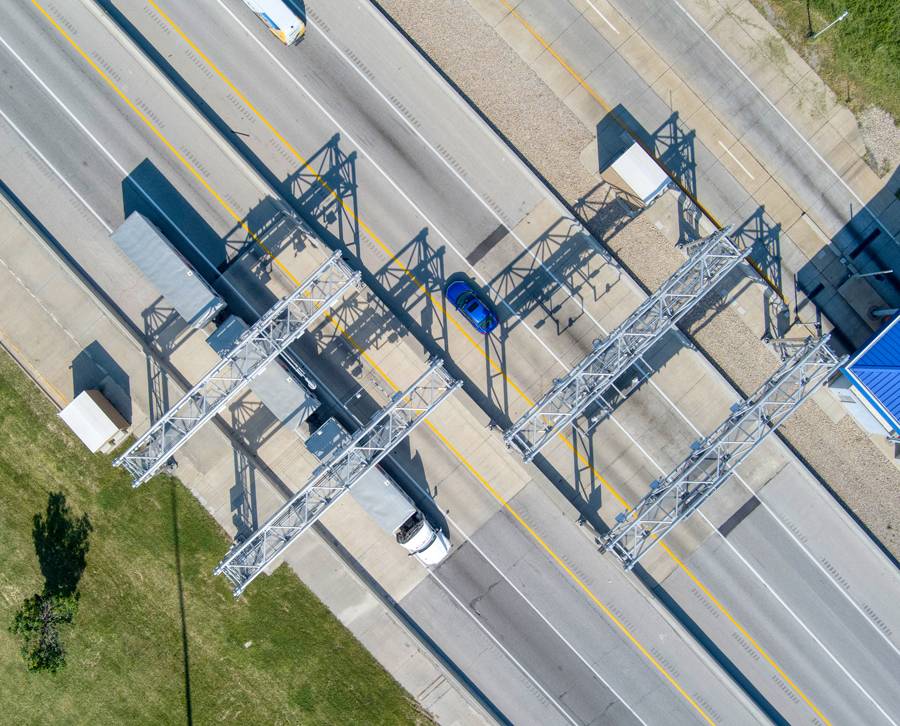
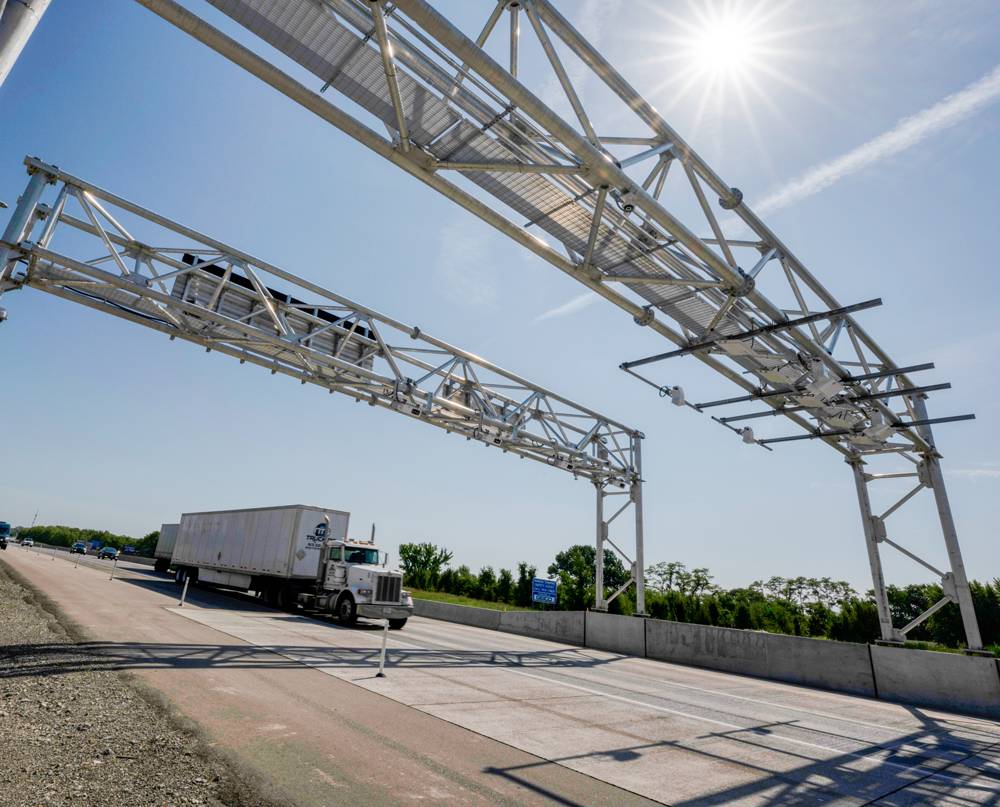
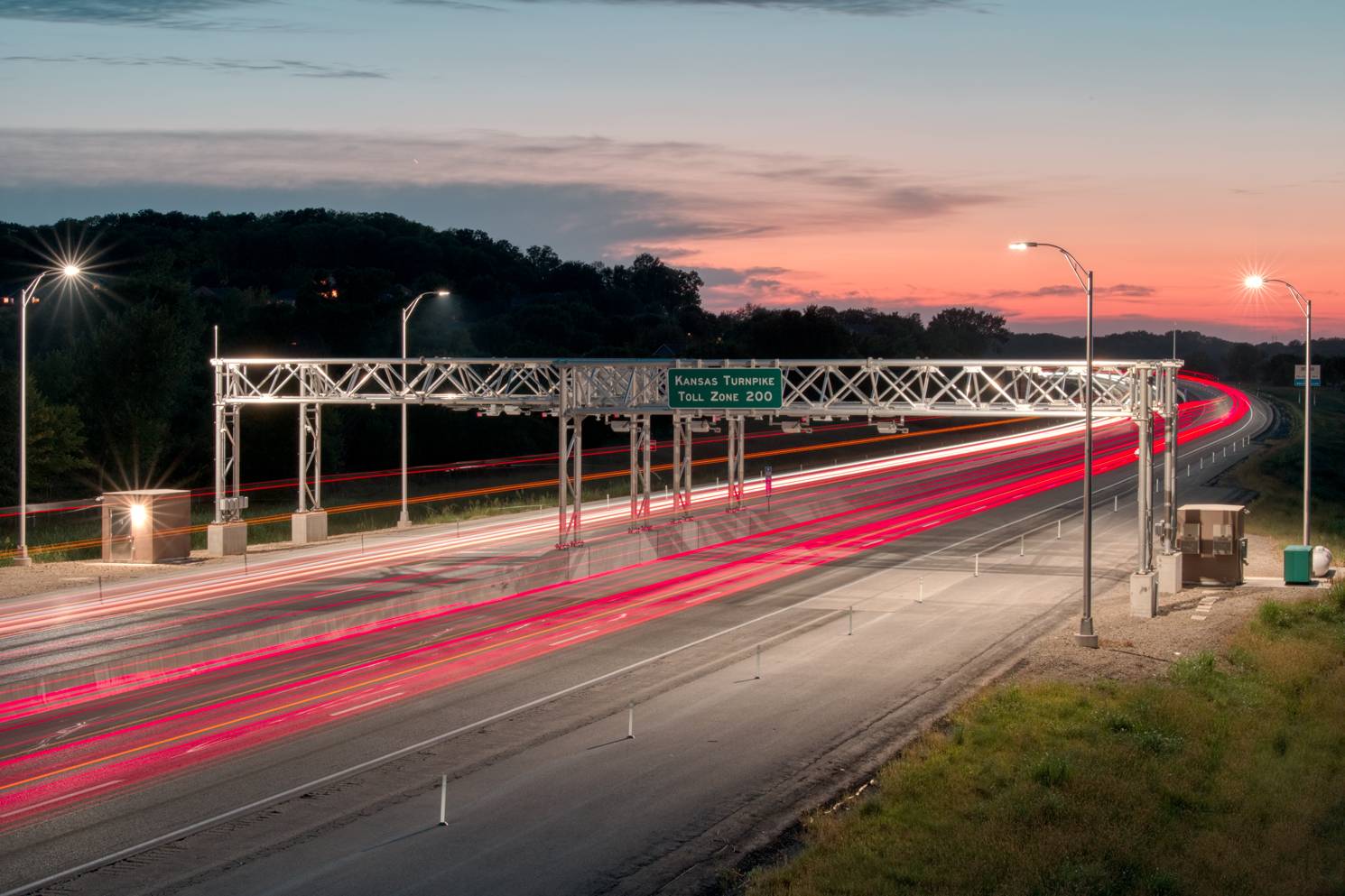
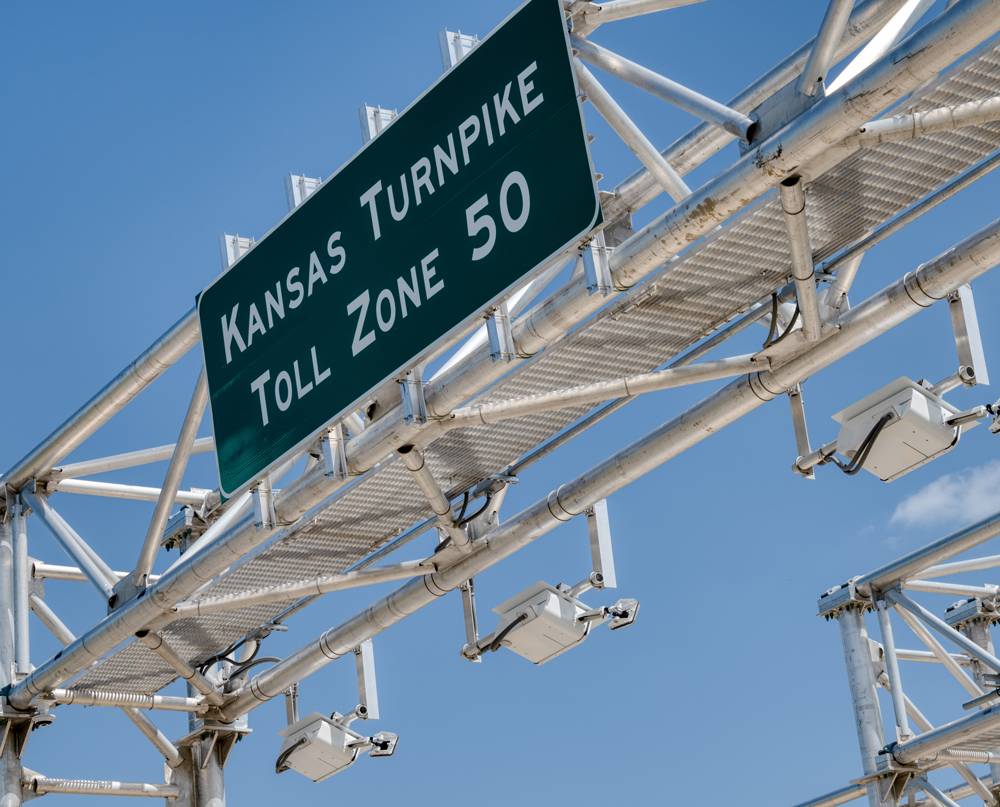
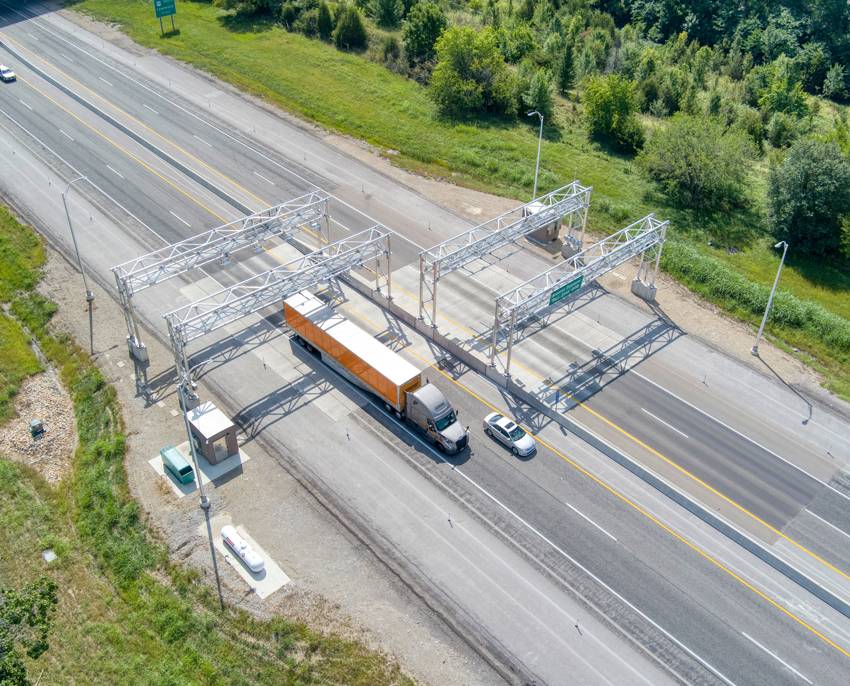
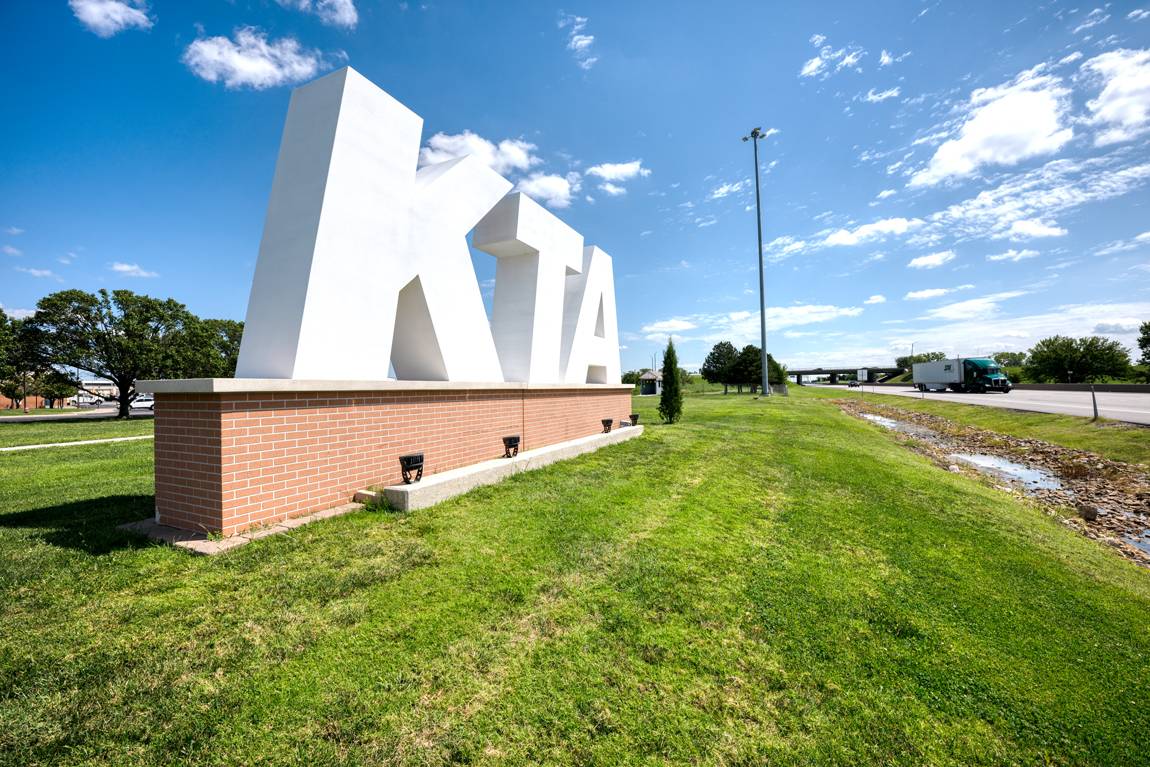
Moving toward conversion
By 2019, KTA had made significant progress toward its KTAG usage goal, allowing the agency to target July 1, 2024, as its conversion date, establishing a phased design, construction and installation schedule that would minimize traffic flow impacts.
Site selection was integral in the design phase. KTA has a backbone of fiber running the length of the turnpike, much of which is in rural areas. HNTB strategically selected and designed the turnpike’s 18 new toll zone locations with 72 new overhead tolling gantries to tap into fiber splices and power source availability, a decision that reduced costs and installation complexity.
In urban areas, where bridge interchanges are close together, potential locations for the new gantries were limited. In these situations, designers selected locations that gave drivers time to read and respond to roadway signs and change lanes as they entered and exited the turnpike.
In construction, KTA maximized efficiencies and created cost savings by dividing construction into four regions and employing local contractors to complete the work across the project.
HNTB anticipated a significant increase in customer call volume at KTA’s call centers due to this conversion. To prepare, the firm supported KTA in hiring, strengthening the customer service training program, preparing organizationally for cashless customer service operations and implementing forecasting tools to ensure the surge could be managed efficiently.
Creating a proprietary system interface
To convert to fully cashless, KTA needed to expand the open road toll lanes it had established at its three highest-revenue-generating plazas to all lanes at all the toll zone locations along the turnpike. This system-wide rollout required significant changes and upgrades to KTA’s back-office infrastructure.
Typically, turnpike agencies outsource such large system interfaces. However, an analysis confirmed that KTA and its customers would benefit from the agency developing its own system interface. It also enabled KTA to upgrade its legacy customer service back-office system to a new platform, database and user experience.
In the long term, the internally built system reduces costs and allows KTA to continue customizing it to address desired system enhancements and operational changes over time.
In response to customer feedback, KTA designed its system with a unique single-account design — uncommon in the tolling industry — that allows transponder and license plate-based customers to manage all their tolls in one account under the agency’s new toll payment system, DriveKS.
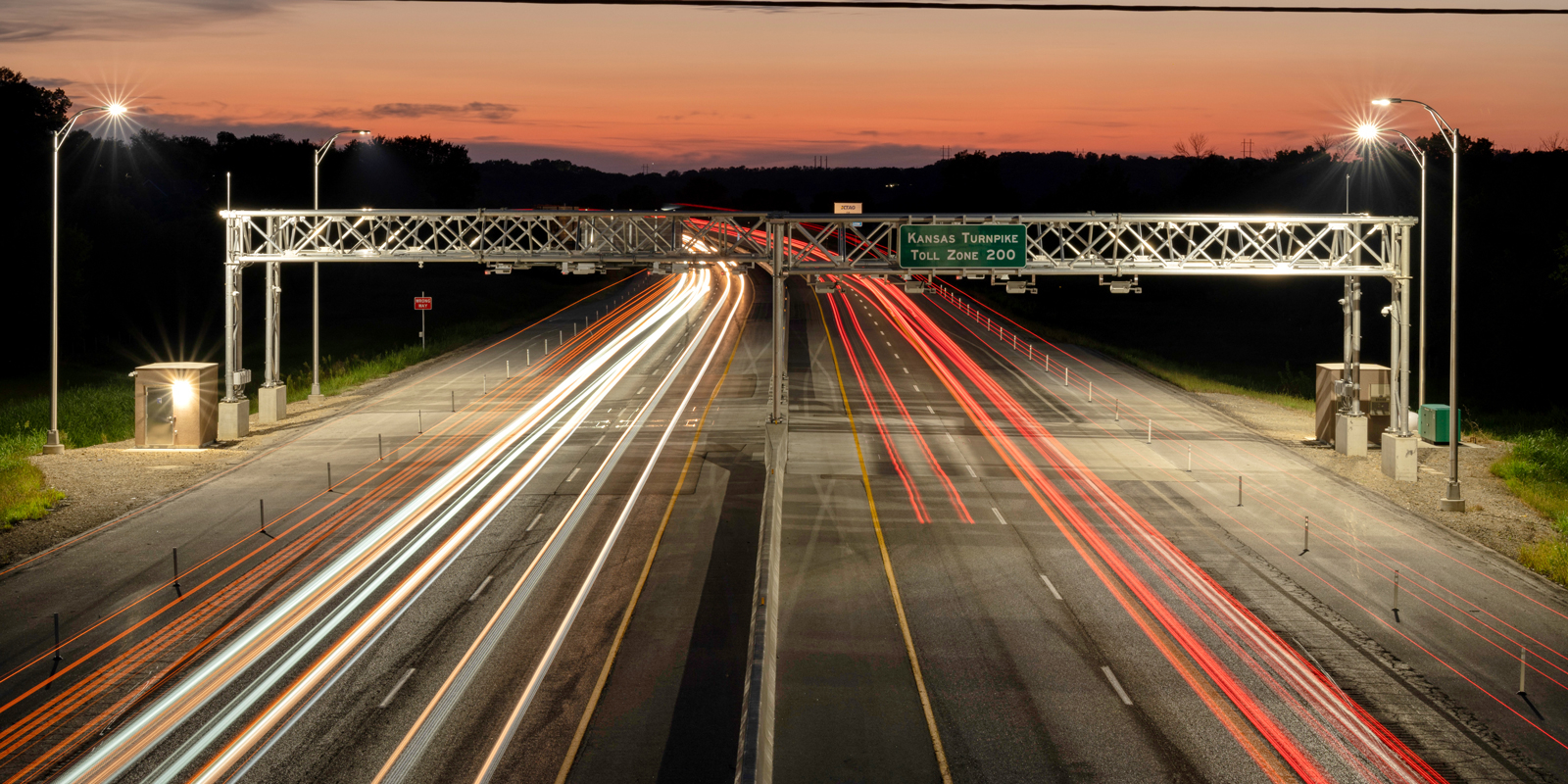
“The turnpike’s conversion to cashless tolling marks a significant advancement in KTA’s transportation technology. This investment has modernized the turnpike for future generations, improving efficiency, safety and financial sustainability — while significantly enhancing customer convenience.”
Committing to successful workforce transition
Understanding that job displacement is a common concern when automation replaces manual processes, KTA prioritized a people-first approach. The agency developed a detailed workforce transition plan that included assistance for those wanting to retire and robust training programs to help people move into new roles within the organization. As a result, no employees lost their jobs due to the transition, and nearly all who wished to remain with KTA found new roles within the agency.
Converting a system overnight
The shift to cashless tolling marked a transformative moment for how KTA operates and serves its customers. To manage the complexity of this systemwide change, KTA established cross-functional working groups composed of internal staff and HNTB experts. Meeting regularly over several years, these teams played a critical role in identifying operational needs, coordinating technical requirements and keeping leadership aligned and informed throughout the process.
While many tolling agencies adopt a phased rollout for cashless conversions, KTA pursued — and successfully executed — a full system switch in a single night. In July 2024, the turnpike transitioned entirely from a trip-based system with a mix of cash and electronic tolling transactions to a transaction-based AET system. This comprehensive change included all roadside equipment, back-office systems and transaction processing.
“The turnpike’s conversion to cashless tolling marks a significant advancement in KTA’s transportation technology,” said Kathryn Lorbacher, a toll technology consultant at HNTB. “KTA’s investment has modernized the turnpike for future generations, improving efficiency, safety and financial sustainability — while significantly enhancing customer convenience.”
SEE MORE ARTICLES
EXPERTISE
Project Profile
I-10 Express Lanes
WVPA Travel Plazas
Project Profile
West Virginia Bridge Decking Program
